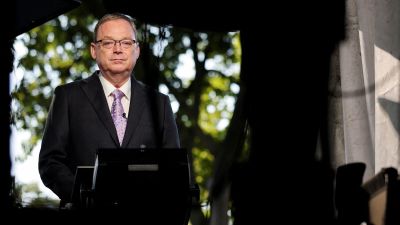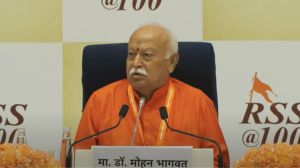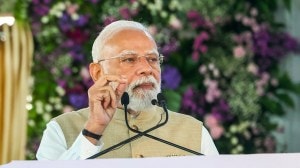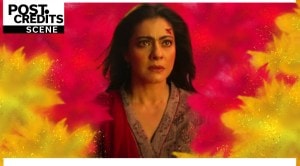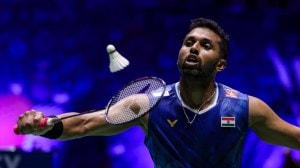Click here to follow Screen Digital on YouTube and stay updated with the latest from the world of cinema.
‘Arts must interact and spaces they occupy must be subverted’
In a first-of-its-kind collaboration, Carnatic vocalist TM Krishna will perform with Kattaikkuttu artistes of Tamil Nadu in Mumbai
 TM Krishna
TM Krishna
Carnatic vocalist TM Krishna’s first encounter with Kattaikkuttu — the folk theatre form of northern Tamil Nadu largely supported by rural audiences — didn’t leave much of an impression on him. He was at school then and also as he says, coming “from an upper-caste/class environment”, his understanding of art and nuance was restricted to that of his circle. Years later, Krishna was invited by Kanchipuram-based Kattaikkuttu Sangam, founded by P Rajagopal and Hanne M de Bruin in 1990, to attend a festival that celebrated this art form and he watched an all-night production of Abhimanyu. That experience made Krishna realise that he didn’t see the beauty in this form earlier because he “lacked the sensitivity and sophistication to enter its aesthetic space”.
Following this, Krishna, a popular face of Carnatic music, along with his wife, musician Sangeetha Sivakumar, started a conversation with Rajagopal and Bruin to bring together Carnatic music and Kattaikkuttu, a traditional movement-and-music based theatre that relies heavily on make-up and costumes. Mostly based on episodes from the Mahabharata “adapted to the local situation”, Kattaikkuttu’s all-night performances are marked with high-energy and intense performances. While Carnatic music enjoys a higher status in the art hierarchy, Kattaikkuttu has been considered “non-elite”. Six months ago, rehearsals started at Kattaikkuttu Gurukulam for their unique collaboration, titled “Karnatic Kuttu”. Initially, they went through excerpts from Kattaikkuttu’s elaborate repertoire. The well-known pieces such as ‘the game of dice’ and ‘the disrobing of Draupadi’ as well as the lesser-known one that narrates the way ‘the 18th day of the war’ unfolded, became the basis for this fusion experiment which premieres at Mumbai’s St Andrews Auditorium on December 16.
Giving an insight into the process of creating Karnatic Kuttu, Bruin says, “In contrast to Carnatic music’s individual concert pieces, we work with a continuous narrative form which needs such a structure. We also started a discussion where Krishna and Sangeetha could come into the Kattaikkuttu repertoire, where Carnatic music could take the upper hand and/or help us transit from one to the next episode. Most importantly, we tried to explore how both forms could comment upon each other and upon the content of the performance musically.” Bruin, a Dutch researcher, has made India her home and is married to Rajagopal, a Kattaikuttu actor, director and playwright.
 A Kattaikkuttu performance of Rama Ravana
A Kattaikkuttu performance of Rama Ravana
Describing the whole process “invigorating”, Krishna said, “We have found the similarities and differences in our forms and learnt to respect each other. As Sangeetha said ‘the Kuttu artiste becomes the art in a way that is so natural’. While we spend hours intellectualising, they just do it. Watching Rajagopal per form at every rehearsal has been stunning.” Krishna, however, clarifies that Carnatic music is not an addition to Kattaikuttu or an embellishment. “Our voices and aural scape will enter the story only in places where it contributes to the Kuttu’s aesthetic experience,” says the Magsaysay awardee. According to Bruin, both the art forms retain their characteristics. “For us, I think, the joy has been in how they speak to and with each other, sharing artistic and social concerns in context,” she says.
During the opening show, 16 Kattaikuttu and Carnatic music artistes will perform for what’s tipped to be the first such fusion of two art forms. In her brief regarding the show, Bruin talks about Carnatic music and Kattaikkuttu theatre meeting “on equal terms to explore what they share, where they differ and how they ‘speak’ to and with each other”. When asked to elaborate on this, Krishna says, “This statement comes from the recognition that we do not see all arts, artistes and communities as equals. Therefore, meetings between forms that inhabit very different and differentiated spaces has to level the ground.” Traditionally, all-night Kattaikuttu shows are peppered with satire and comments on the local issues that are politically subversive. For this show, Krishna and Rajagopal have decided to develop a musical dialogue focusing on issues that are responsible for the division that exists or is perceived to exist between Carnatic and Kuttu: the nature of “art”; the nature of language; caste and the intricacies that are inherent to both forms.
While Bruin is unsure where would the show travel after its Mumbai opening, Krishna hopes that through such a collaboration they would be able to influence minds. “We have to perform in the villages of Tamil Nadu as much as we should in Mumbai or Chennai. These interactions cannot stop on the proscenium stage, they have to result in greater social interaction between people. The arts must interact and the spaces they occupy must also be subverted.”


Photos


- 01
- 02
- 03
- 04
- 05


